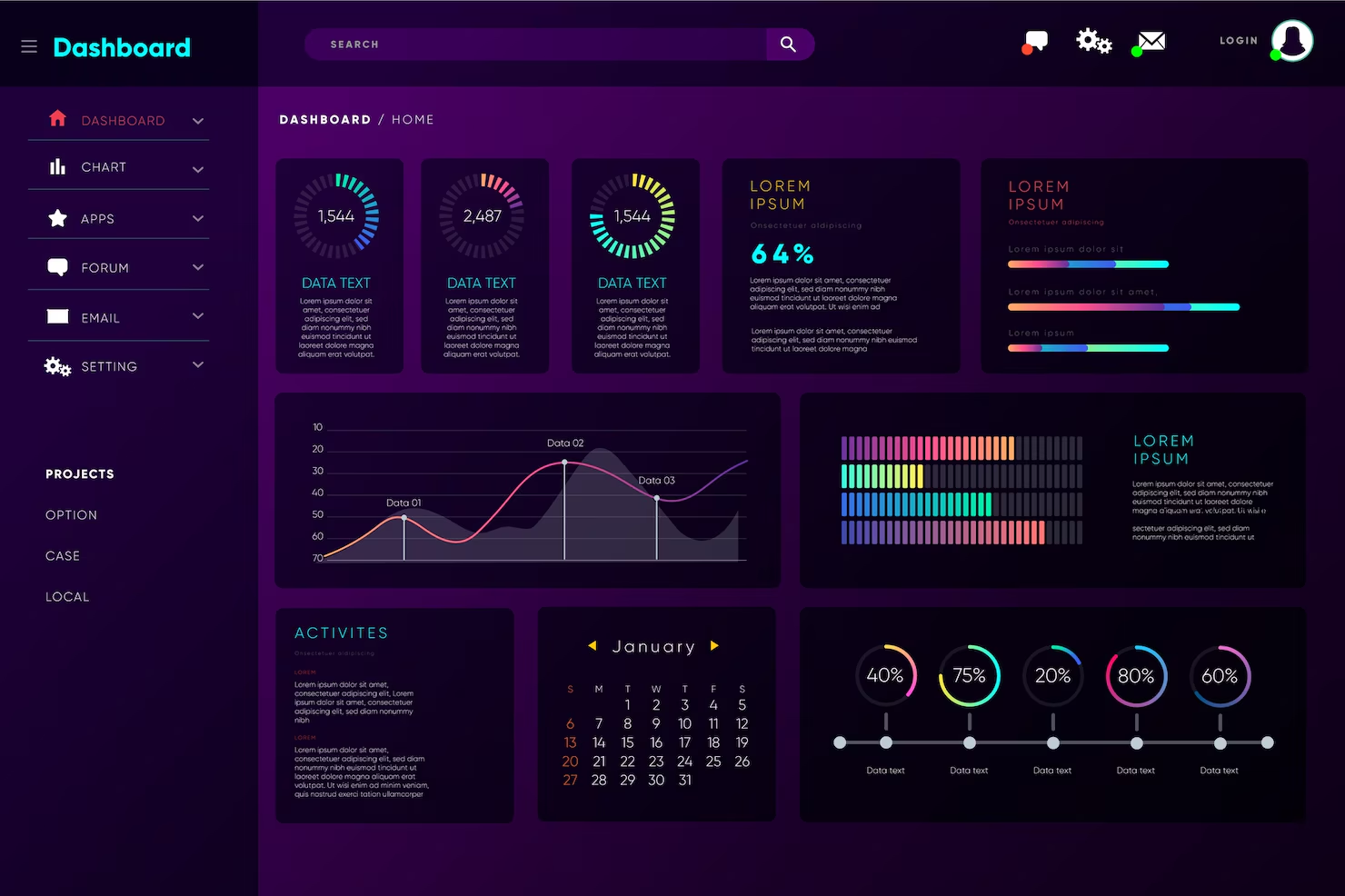- How to Use Web Analytics to Improve Your Marketing - October 21, 2025
- Video Marketing Ideas for Small Businesses - October 21, 2025
- Understanding Customer Journey Mapping in Marketing - October 21, 2025
In the modern digital landscape, data is the lifeblood of marketing. Every click, scroll, and conversion tells a story about your audience, your content, and your campaigns. Web analytics is the tool that transforms raw data into actionable insights, enabling businesses to make informed decisions, optimize strategies, and maximize ROI.
For small and medium businesses, web analytics is especially powerful. It provides a level playing field where smaller brands can compete with industry giants by understanding their audience better, refining messaging, and improving campaigns continuously.
In this comprehensive guide, we’ll explore how to leverage web analytics effectively, understand the key metrics, and use the insights to improve your marketing strategy.

Understanding Web Analytics
Web analytics refers to the collection, measurement, and analysis of website data to understand user behavior. Unlike traditional marketing, which relies on intuition or sporadic surveys, web analytics provides real-time, quantitative insights.
What Web Analytics Can Tell You
Web analytics tools, such as Google Analytics, Adobe Analytics, or Matomo, track a variety of user behaviors:
- How visitors arrive at your website (traffic sources)
- Which pages they visit and for how long
- How users interact with forms, buttons, and videos
- Conversion actions, such as purchases, sign-ups, or downloads
- User demographics, location, and devices used
These insights allow marketers to answer crucial questions: What content resonates most? Which campaigns drive conversions? Where are users dropping off?
The Importance of Web Analytics in Marketing
Incorporating web analytics into your marketing strategy provides several key advantages:
- Data-Driven Decisions: Eliminate guesswork and base decisions on actual user behavior.
- Improved ROI: Identify high-performing campaigns and allocate budget efficiently.
- User Experience Optimization: Understand pain points and improve website usability.
- Targeted Marketing: Segment audiences and deliver personalized messages.
- Continuous Improvement: Track trends over time to refine strategies and anticipate future behavior.
Without web analytics, marketing strategies rely heavily on assumptions, which can lead to wasted budget, missed opportunities, and poor engagement.

Key Web Analytics Metrics Every Marketer Should Track
Understanding the metrics is the first step to using web analytics effectively. While there are dozens of metrics available, some are critical for improving marketing outcomes.
Traffic Sources
Knowing where your visitors come from helps you optimize marketing spend and target the most effective channels. Traffic sources typically include:
- Organic search (SEO)
- Paid search (PPC campaigns)
- Social media referrals
- Email campaigns
- Direct visits (users typing your URL directly)
User Behavior Metrics
Behavior metrics reveal how users interact with your site, helping you identify strengths and weaknesses. Key metrics include:
- Pageviews: How often a page is viewed.
- Average Session Duration: How long visitors stay engaged.
- Bounce Rate: Percentage of users leaving after viewing one page.
- Exit Pages: Pages from which users leave your site most frequently.
Analyzing these metrics highlights areas for improvement, such as page load speed, content relevance, or navigation issues.
Conversion Metrics
Conversions measure the effectiveness of your marketing efforts in driving desired actions. These include:
- Product purchases
- Form submissions
- Newsletter sign-ups
- Downloads of resources or guides
Tracking conversions allows marketers to understand what drives action and optimize campaigns accordingly.
Audience Demographics and Segmentation
Understanding your audience is key to personalized marketing. Web analytics can provide insights into:
- Age and gender
- Geographic location
- Device and browser usage
- Interests and behavior patterns
This information helps tailor marketing campaigns to resonate with specific segments.
Using Web Analytics to Improve Marketing Strategy
The true value of web analytics comes from turning data into actionable strategies. Here’s how small businesses can leverage insights effectively:
Optimizing Content Marketing
Web analytics can reveal which content resonates most with your audience. By analyzing metrics like pageviews, average time on page, and social shares, marketers can:
- Focus on topics that generate high engagement
- Repurpose high-performing content into videos, infographics, or email campaigns
- Identify underperforming content and refine messaging or SEO
For example, if a blog post about “Digital Marketing Tips for Small Businesses” receives high traffic but low conversion, marketers can add stronger CTAs, lead magnets, or downloadable resources to boost performance.
Enhancing SEO Strategies
SEO relies heavily on data-driven insights. Web analytics helps identify:
- Keywords driving traffic
- Landing pages attracting organic visitors
- Pages with high bounce rates that need optimization
Marketers can use this data to refine keyword strategies, improve meta descriptions, and optimize page content, ultimately improving search rankings and attracting qualified leads.
Improving Paid Campaigns
Paid campaigns, such as Google Ads or social media ads, require constant monitoring to ensure ROI. Web analytics helps marketers track:
- Which campaigns drive the most traffic
- Conversion rates per ad or keyword
- Cost per acquisition (CPA) and return on ad spend (ROAS)
Using these insights, small businesses can allocate budgets to the most effective campaigns, pause underperforming ads, and improve targeting.
Personalizing Marketing Efforts
Web analytics allows for audience segmentation, enabling marketers to create personalized experiences. Personalized marketing can significantly improve engagement, retention, and conversion rates.
- Segment users based on behavior, demographics, or purchase history
- Deliver targeted email campaigns or website recommendations
- Adjust messaging based on user preferences
For example, an e-commerce store can recommend products based on previous purchases, increasing the likelihood of repeat sales.
Optimizing User Experience
User experience is crucial for conversion. Web analytics reveals pain points such as:
- Slow-loading pages
- Confusing navigation
- High drop-off during checkout
By addressing these issues, businesses can reduce bounce rates, increase time on site, and improve conversions.
Tracking Customer Journey and Attribution
Understanding the customer journey is essential for allocating resources effectively. Web analytics helps:
- Map touchpoints across channels
- Identify which channels contribute most to conversions
- Attribute credit accurately to marketing efforts
For example, a customer may first discover a brand via social media, then visit the website through organic search, and finally convert through email marketing. Web analytics allows marketers to understand and optimize this multi-channel journey.
Continuous Testing and Improvement
Web analytics enables a culture of testing and refinement:
- A/B testing headlines, images, CTAs, and landing pages
- Monitoring engagement and conversion metrics
- Iteratively improving campaigns based on data
Small businesses that consistently test and refine strategies are more likely to stay ahead of competitors and maximize ROI.
Predictive Analysis and Forecasting
Advanced web analytics tools can leverage historical data to predict future trends. Predictive analytics allows marketers to:
- Forecast traffic and conversions
- Anticipate seasonal demand or trends
- Plan marketing campaigns proactively
For instance, if historical data shows increased traffic and conversions in December, businesses can prepare targeted campaigns to capitalize on seasonal behavior.
Web Analytics Tools for Small Businesses
Choosing the right tool is essential for effective data tracking. Some popular options include:
- Google Analytics: Free, robust, and widely used for traffic and behavior insights.
- Google Search Console: Tracks SEO performance, keywords, and website indexing.
- Hotjar or Crazy Egg: Provides heatmaps and session recordings for UX analysis.
- Matomo: Open-source alternative for privacy-focused analytics.
- HubSpot Analytics: Integrated CRM and marketing analytics for end-to-end insights.
Each tool offers unique features, and small businesses can combine multiple tools to get a complete view of website performance and marketing impact.
Challenges and Considerations
While web analytics is invaluable, marketers must be aware of potential challenges:
- Data Overload: Too much data can be overwhelming; focus on actionable metrics.
- Privacy Compliance: Ensure GDPR, CCPA, and other regulations are followed when tracking user data.
- Accurate Attribution: Multi-channel customer journeys can make it difficult to assign credit correctly.
- Skill Gap: Interpreting analytics requires knowledge and experience; training or hiring may be necessary.
By acknowledging these challenges, businesses can use analytics effectively while minimizing risks.
Conclusion
Web analytics is a powerful tool that can transform marketing efforts for small businesses. By tracking traffic, engagement, conversions, and audience behavior, marketers can make informed decisions, optimize campaigns, and maximize ROI.
In a digital world where competition is fierce, understanding your audience, personalizing content, improving user experience, and continuously refining strategies are key to success. Web analytics empowers businesses to move beyond intuition and guesswork, creating marketing strategies that are data-driven, targeted, and highly effective.
For small businesses, embracing web analytics is not just an option—it is a necessity for sustainable growth. By leveraging the insights, experimenting with campaigns, and focusing on audience needs, small businesses can outperform larger competitors and create meaningful connections with their customers.
